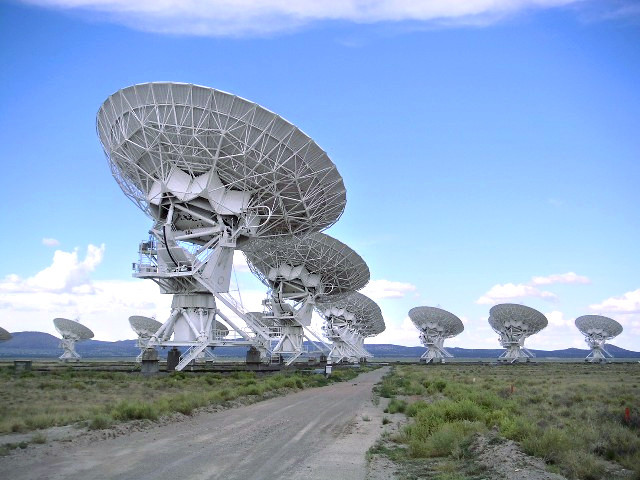Summary | Excerpt | Reviews | Beyond the Book | Read-Alikes | Genres & Themes | Author Bio

This article relates to The Avian Hourglass
 The narrator of The Avian Hourglass wants to be a radio astronomer, a revelation that caused me to realize that I don't actually know anything about that kind of astronomy. (For a moment I thought it was astronomy done over the radio so you wouldn't get to actually see anything cool.) I've since learned that radio astronomy is the use of radio waves to gather data, as opposed to "visible light" astronomy. By studying the radio waves emitted by celestial objects, astronomers can collect data even from dark or weakly-lit objects. The radio waves can be converted into images.
The narrator of The Avian Hourglass wants to be a radio astronomer, a revelation that caused me to realize that I don't actually know anything about that kind of astronomy. (For a moment I thought it was astronomy done over the radio so you wouldn't get to actually see anything cool.) I've since learned that radio astronomy is the use of radio waves to gather data, as opposed to "visible light" astronomy. By studying the radio waves emitted by celestial objects, astronomers can collect data even from dark or weakly-lit objects. The radio waves can be converted into images.
For the novel's narrator, radio waves tie everything together and always have:
"It was radio astronomy that introduced us to the idea of the Big Bang. Radio astronomy that initiated the understanding that there was a microwave radiating off of everything—planets, stars, meteors, comets—and someone asked where did it come from and someone else figured out that it came from the beginning, from the moment that everything began. The Big Bang was the one great cause, and everything."
In 1948, scientists were searching for the origin of the universe. The most dominant theory was the "steady state theory," which held that the universe gradually expanded over time, and that there was no definitive point at which matter was created. An alternative theory developed in physics in this year, drawing from the earlier work of Georges Lemaître (the "Father of the Big Bang"), suggesting that all matter was created at once, in one extremely hot, bright spot. Because of the heat, it is believed that most of the matter created in this era would have been radiation.
In 1964, physicists Arno A. Penzias and Robert W. Wilson were investigating microwave emissions from the Milky Way, but found they could never get rid of a constant level of background static. (They ruled out every cause they could think of, including pigeon droppings in the antenna.) Ultimately, Penzias and Wilson won the Nobel Prize for their study of "cosmic microwave background radiation" (aka static). They proved that the radiation existed, then contacted Princeton's Robert Dicke to research its significance. Dicke had long theorized that evidence of the Big Bang might still exist in the form of radiation, and he was able to prove that the static heard by Penzias and Wilson was exactly that.
Today, radio astronomy is largely conducted via antenna arrays, used in a number of communication and tracking fields, but primarily to study objects and locations in space. Comprised of multiple antennae positioned together, the arrays provide more complete data and less atmospheric interference than any one antenna could offer on its own.
Radio astronomy is continually refined to give more and more information about the universe's start. No evidence has been found that discredits the Big Bang theory. In fact, we might be closer to "seeing" it. Cosmologists at the National Astronomical Observatory of Japan have been running thousands of simulations on a supercomputer, hoping to find and recognize the most accurate depiction. As study leader Masato Shirasaki told Live Science, "We are trying to do something like guessing a baby photo of our universe from the latest picture."
The Very Large Array radio astronomy observatory in Socorro County, New Mexico, courtesy of Wikimedia Commons CC BY-SA 3.0
Filed under Medicine, Science and Tech
![]() This article relates to The Avian Hourglass.
It first ran in the November 20, 2024
issue of BookBrowse Recommends.
This article relates to The Avian Hourglass.
It first ran in the November 20, 2024
issue of BookBrowse Recommends.
Finishing second in the Olympics gets you silver. Finishing second in politics gets you oblivion.
Click Here to find out who said this, as well as discovering other famous literary quotes!
Your guide toexceptional books
BookBrowse seeks out and recommends the best in contemporary fiction and nonfiction—books that not only engage and entertain but also deepen our understanding of ourselves and the world around us.